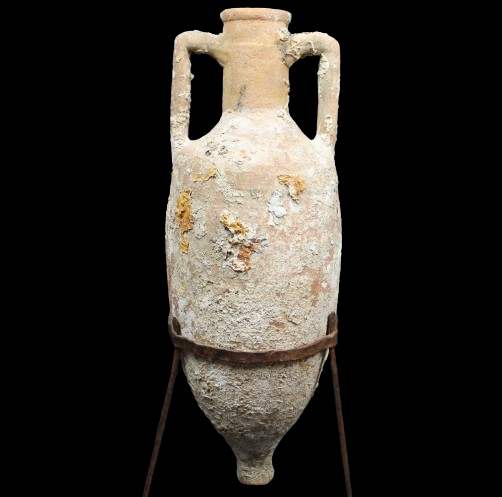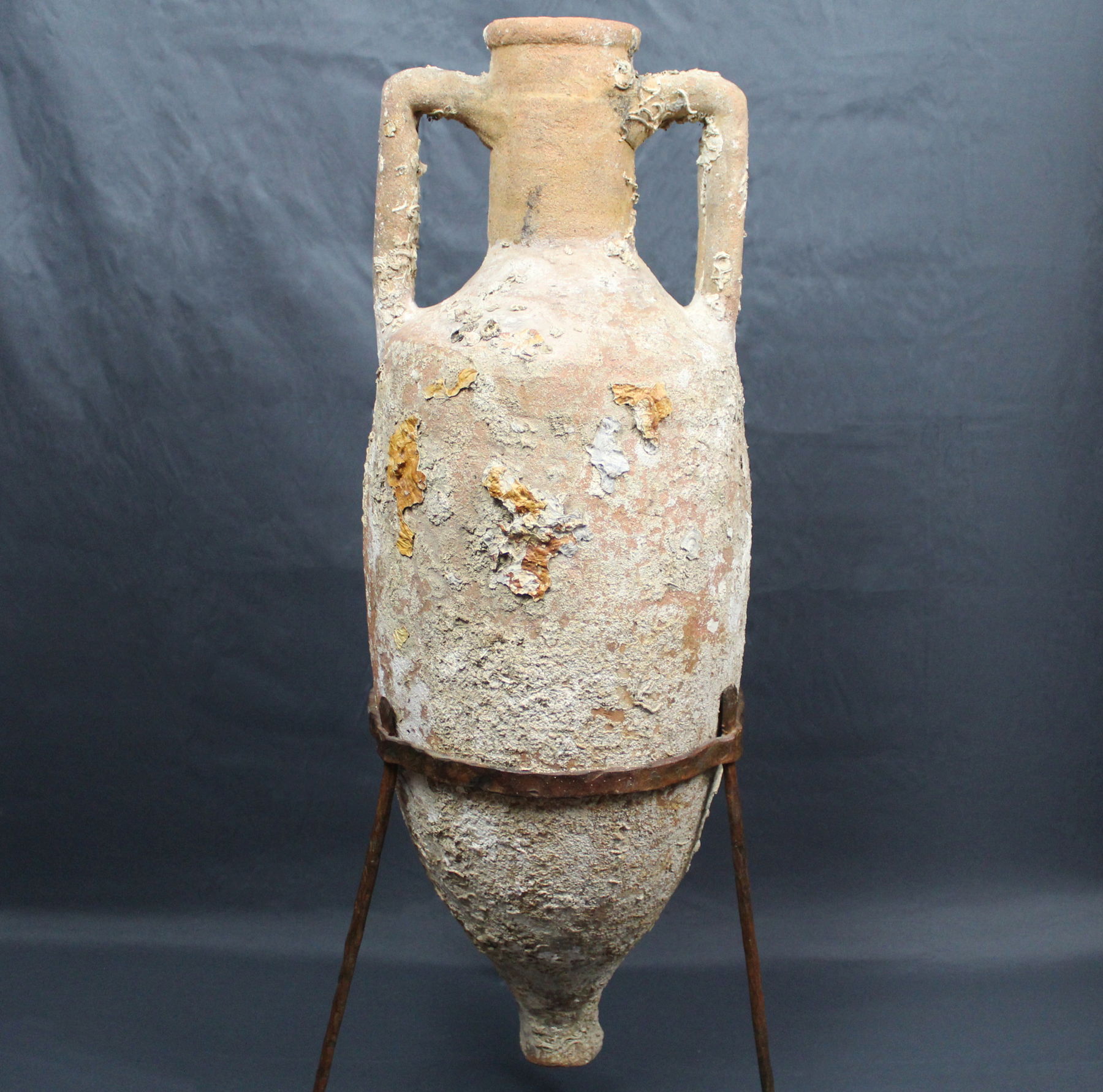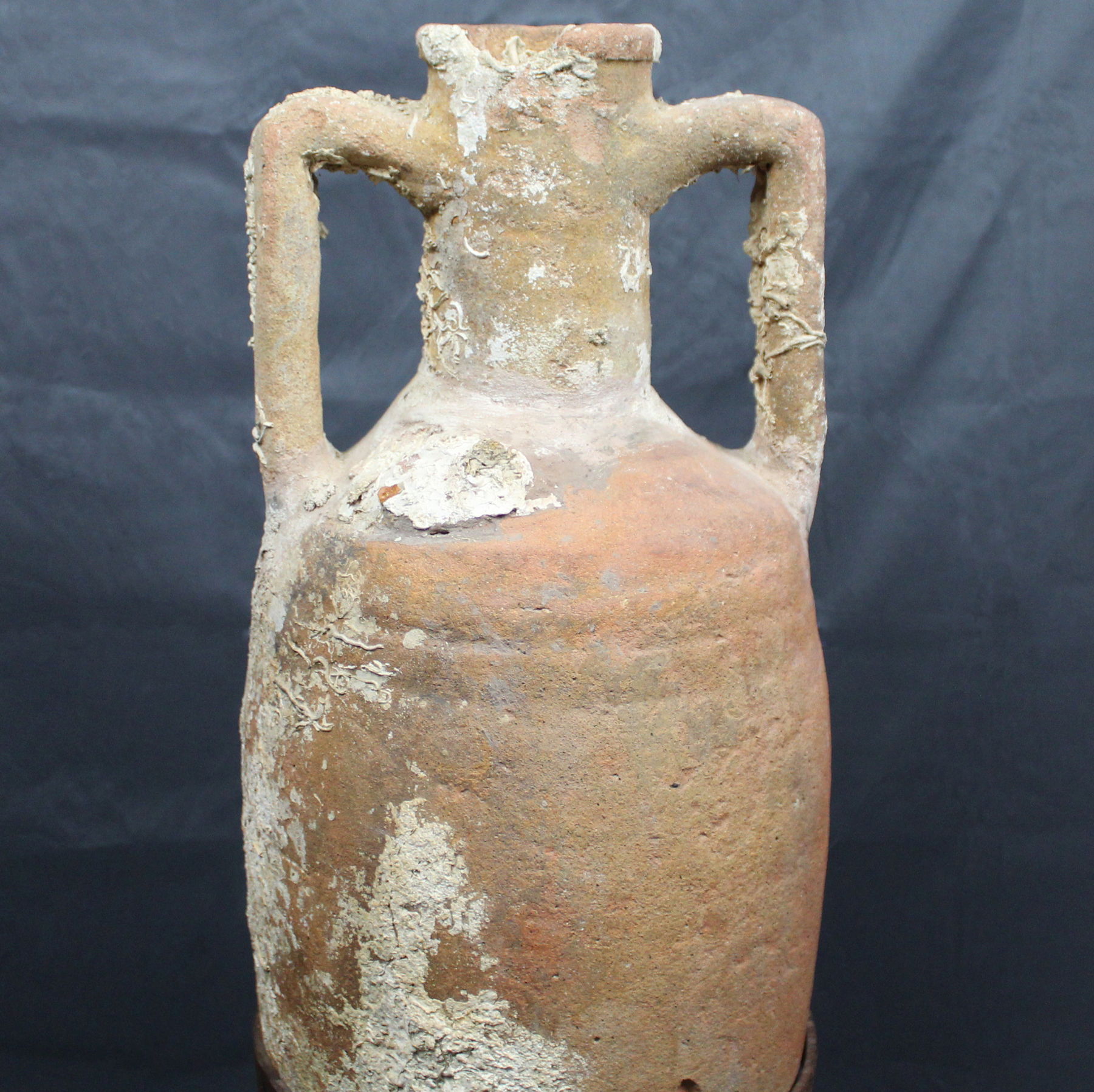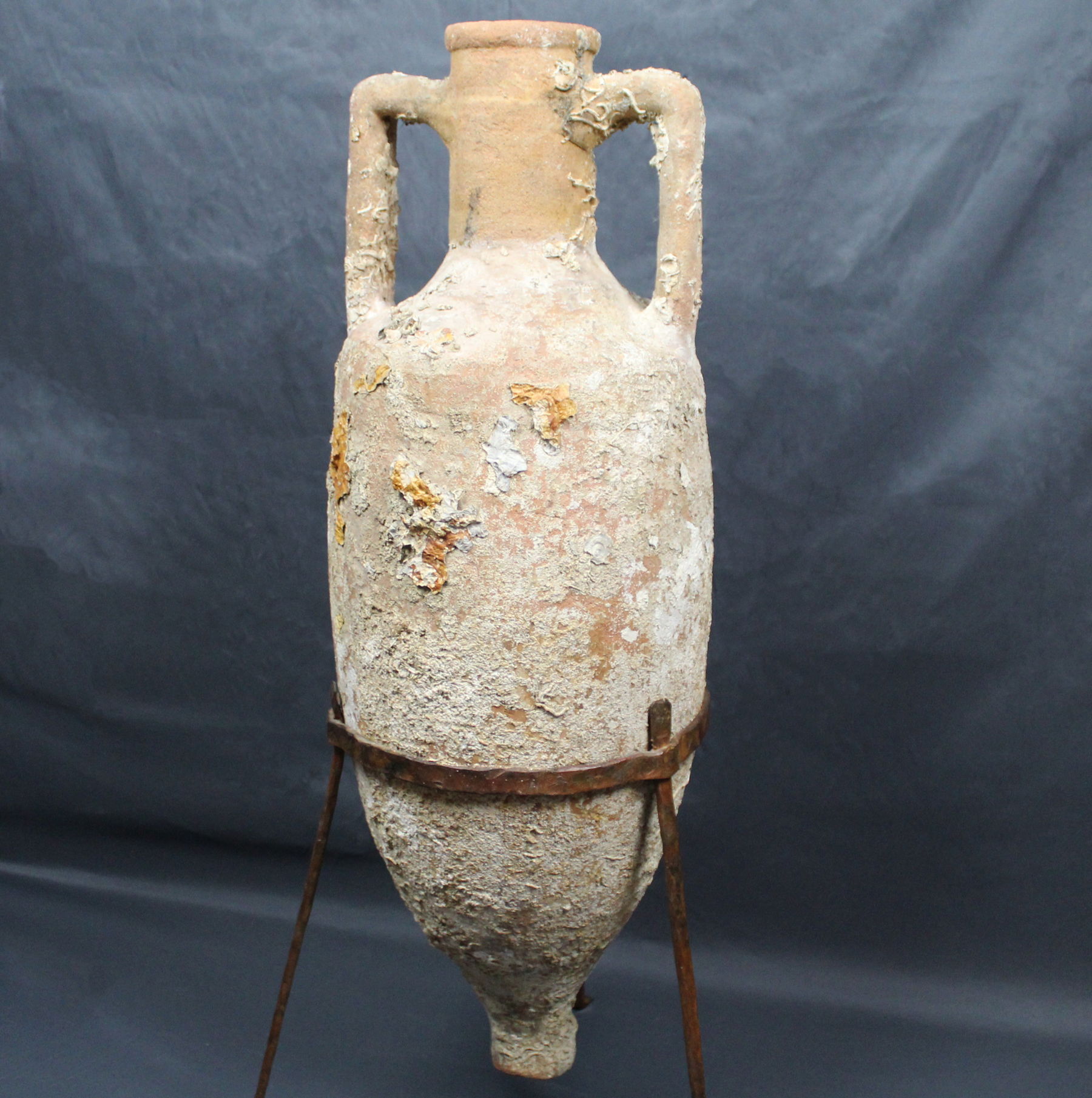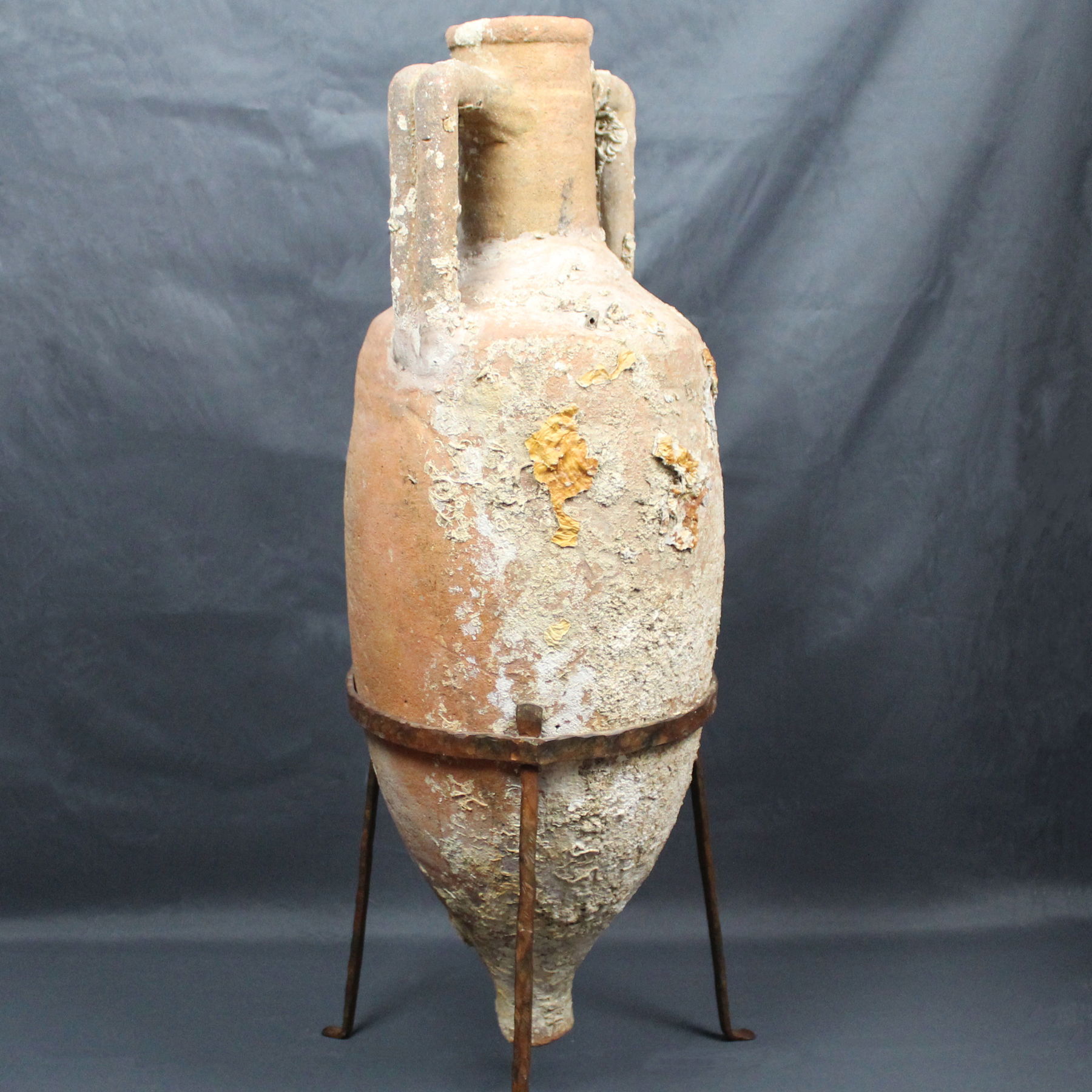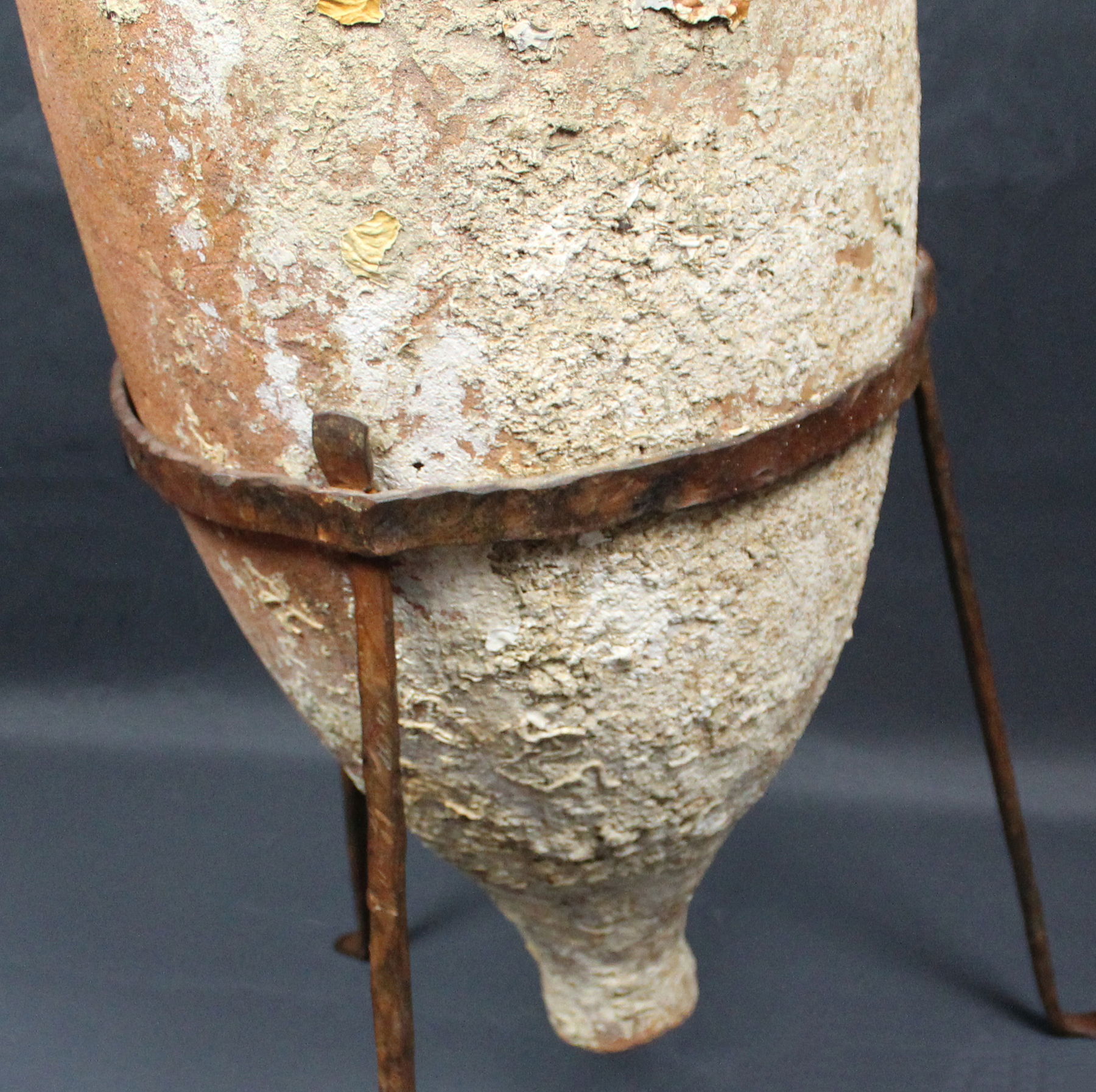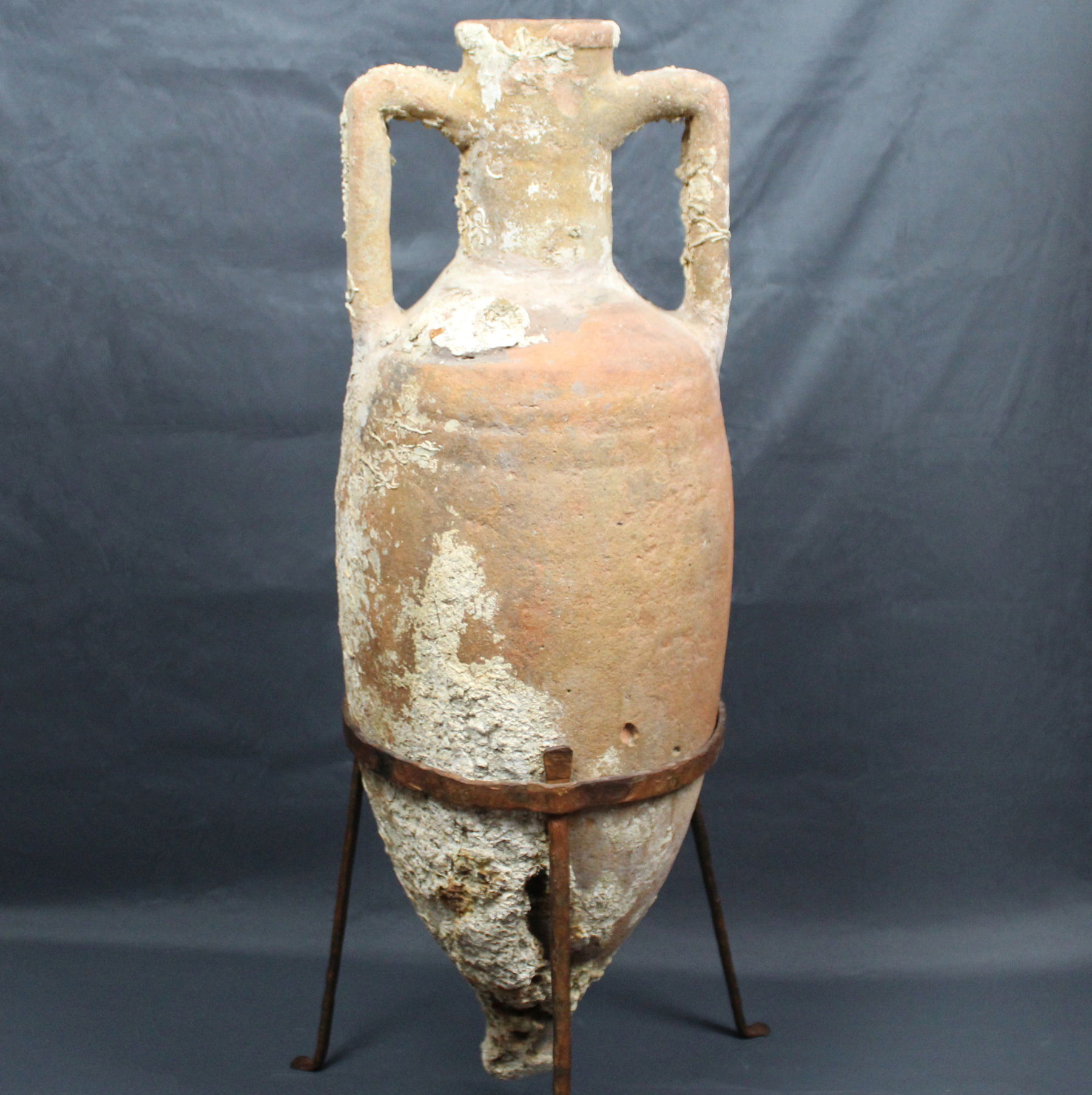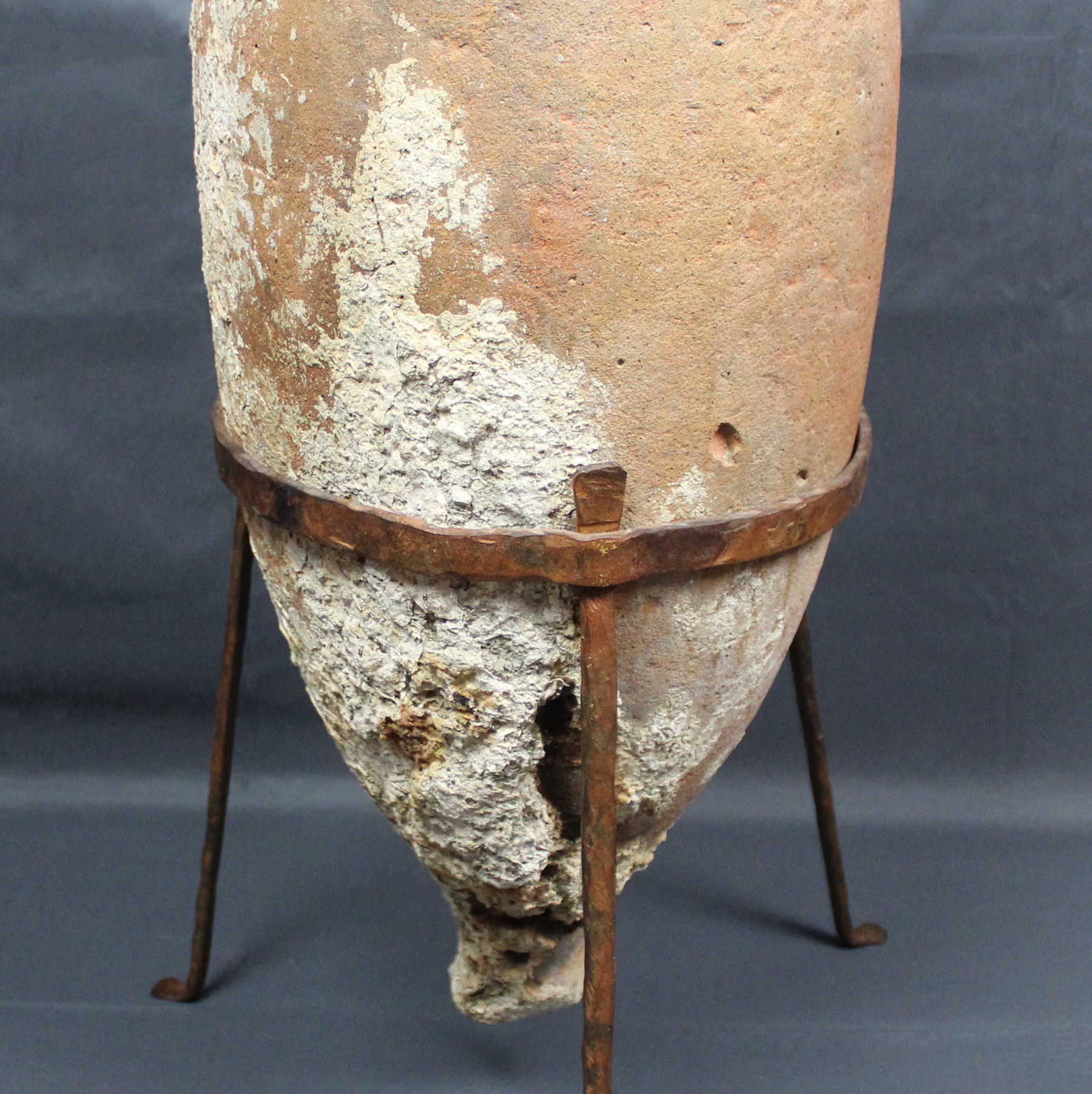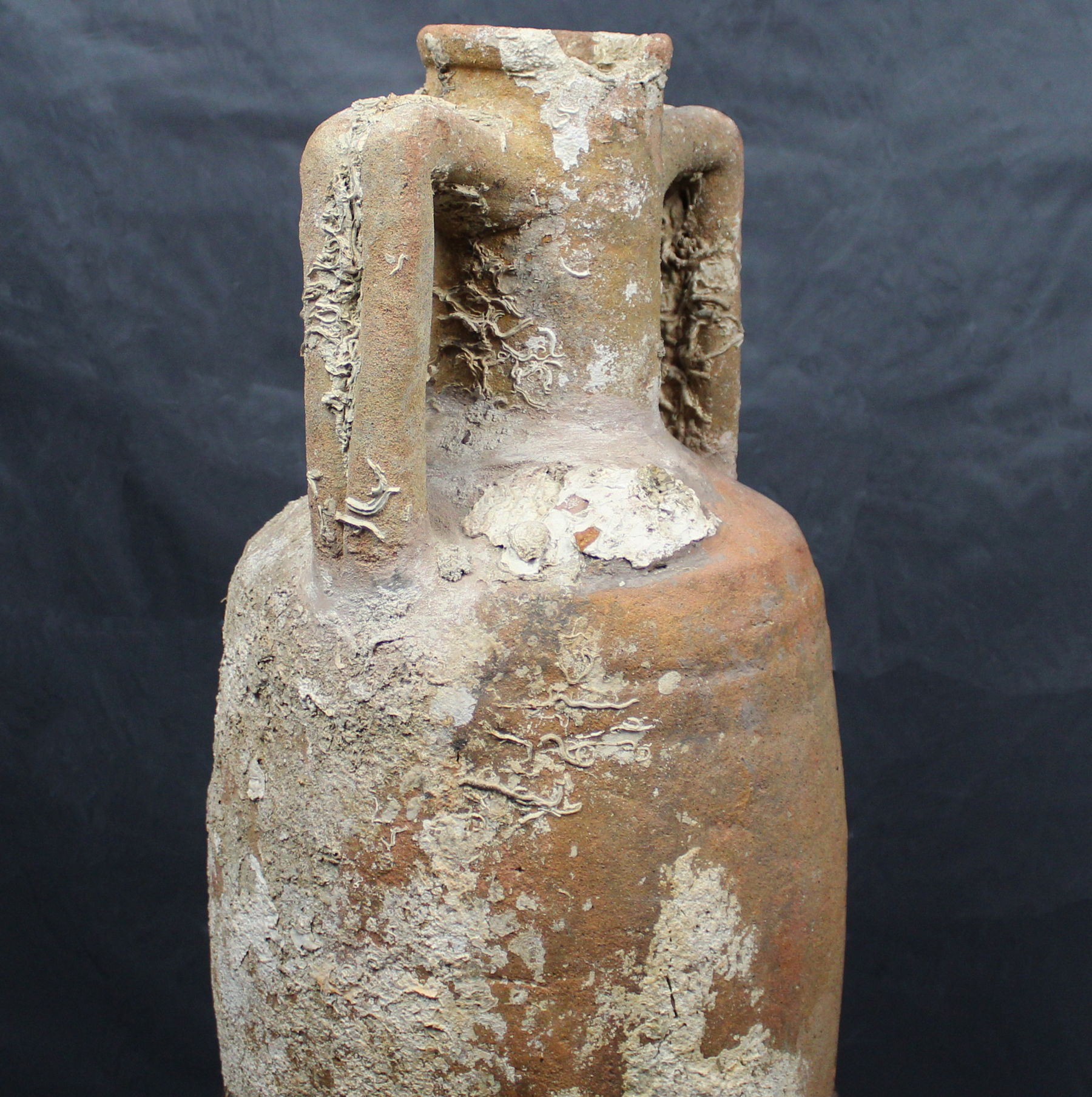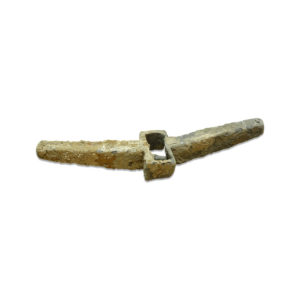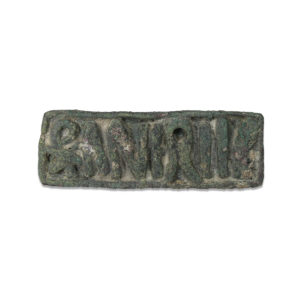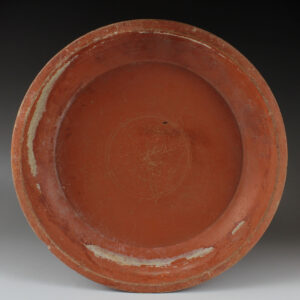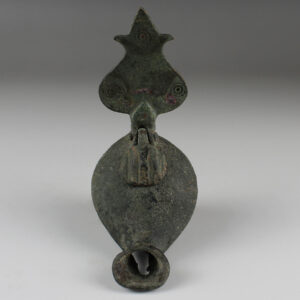Description
| ITEM | Shipwreck amphora, Type Dressel 3 |
| MATERIAL | Pottery |
| CULTURE | Roman |
| PERIOD | 1st – 2nd Century A.D |
| DIMENSIONS | 84 cm x 26 cm diameter (without stand), 90 cm x 26 cm diameter (with stand) |
| CONDITION | Good condition. Small missing part in the mouth. See pictures. Includes stand |
| PROVENANCE | Ex Belgian private collection, S., Ghent, Ex Belgian private collection, G. H., Ghent (1974) |
Roman amphoras of the Dressel 3 type represent a distinctive category of amphoras used for the transportation and storage of goods in the ancient Roman Empire. Named after the German archaeologist Heinrich Dressel, who classified them in the late 19th century, Dressel 3 amphoras were prevalent during the 1st century CE and were primarily employed for the transportation of wine, olive oil, and other liquid commodities.
Dressel 3 amphoras are characterized by their bulbous body with a relatively short, wide neck and two large handles positioned near the upper part of the body. Unlike some other types of Roman amphoras, Dressel 3 vessels typically have a flat or slightly concave bottom, which allowed them to be stacked more easily for transportation and
storage. These vessels varied in size, with capacities ranging from approximately 25 to 40 liters, depending on their specific use and regional variations.
Archaeological evidence suggests that Dressel 3 amphoras were produced in various regions of the Roman Empire, including Italy, Gaul (modern-day France), Spain, and North Africa. The widespread distribution of these vessels highlights the importance of trade and commerce in the ancient Mediterranean world, as Dressel 3 amphoras were used to transport goods across long distances via land and sea routes. Additionally, the presence of stamped markings, such as potter’s marks or symbols indicating the origin and quality of the contents, provides valuable information for researchers studying ancient Roman economic activity and commercial networks. Overall, Dressel 3 amphoras serve as important artifacts that offer insights into the logistics and infrastructure of ancient Roman trade and transportation systems.


